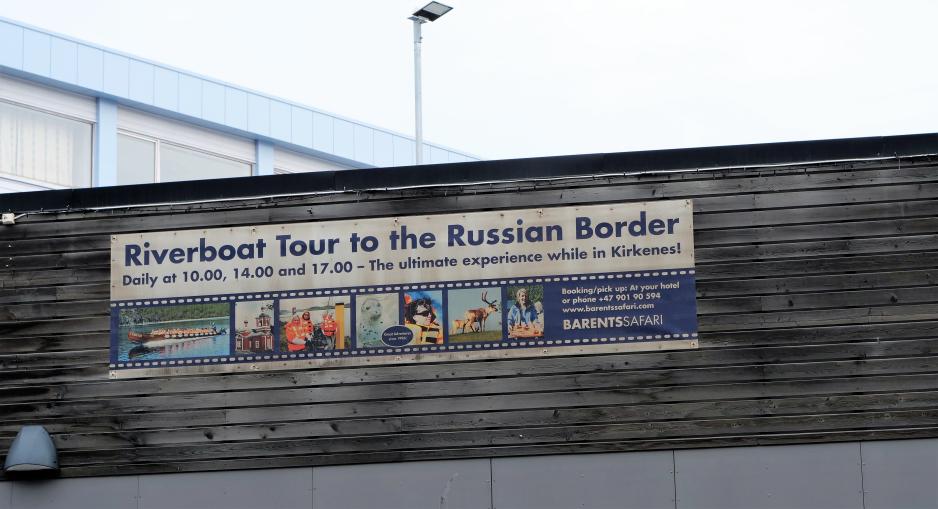With Russia on the Border: Is Splitting Troms and Finnmark Madness or Wise?

The proximity to Russia is visible everywhere in Kirkenes. (Photo: Arne O. Holm)
Commentary: Russia’s attack on Ukraine has made western states crowd around international institutions. All over Europe, principles have to give way for a pragmatism adjusted to a new reality. In Norway, we take the opposite route. That is a poor reply to an aggressive and warring Russia.
The Norwegian government’s decision to dissolve Troms and Finnmark County [the two were forcibly merged into one by the previous government] was made long before the Russian invasion of Ukraine. The fact that the decisions is being reconsidered in light of the current situation should be understood by most, even the most ardent opponents of the forced merge.
A united North
What we need more than anything is a robust North. A North whose political decisions and demands to national authorities carry weight. Not a divided North with two kinds of governing mechanisms.
An EU debate appears to be slowly emerging in Norway. Inavoidable because the decisions and initiatives against the war are made without Norway’s sitting by the table. The debate will probably not grow more than to the ‘emerging’ state, as having the agrarian Center Party in the government coalition is a guarantor against Norwegian EU membership.
In a few weeks, Finland may have decided to apply for NATO membership.
If that were to happen, it is quite likely that Sweden will follow suit. That would be a blatant breach with the neutrality policy that has been the joint headline for Swedish and Finnish security policy. A breach forced by the war against Ukraine rather than by principal thinking.
If Sweden and Finland were to become NATO members, that would carry big consequences for the security policy situation in the Arctic and the High North.
Principles must give way for pragmatism
Still a peaceful North?
The mantra about a peaceful Arctic risks losing its substance. It is already under pressure, even if Finland and Sweden were to remain outside the Alliance.
From a Russian point of view, the buffer against NATO – Sweden and Finland – will be gone. It means, at least for as long as Putin holds the power, that there will be increased Russian military mobilization in the High North.
If Finland were to apply for membership in NATO, and be accepted, NATO will roll out allied forces to a far higher degree than today along the 1,343 kilometers’ long border between Russia and Finland.
It is the same border that continues into Norway. Into a sparsely populated county as a part of Troms and Finnmark County, now to be returned into one county including some 1,4 percent of the Norwegian population. That is our security policy frontline against Russia.
And it will grow worse, according to figures presented during the High North Dialogue in Bodø, Norway just the other day, a conference stressing the demographic challenges as a contrast to the needs of an expansive business sector.
The discussions about population figures had a thing in common with the major security policy issues characterizing the Arctic; none of the solutions lie in establishing more levels of governance or shrinking regions. It is rather about strengthening and gathering more of them under national and international superstructures.
The peaceful North is under pressure
Money will not solve everything
The Norwegian government has once again granted enormous amounts of money into transition for the border town of Kirkenes, this time because of a sudden lack of income from business cooperation with Russia. Last time, it was a compensation for shutting down the mining activities.
Money alone is a quick-fix solution to a crisis that is exacerbated by the belief that the smaller and more sparsely populated a county is, the better suited it will be in a crisis situation. There are few, if any evidence that the money allocated have any effect, neither in the shorter nor the longer term.
Money need to be followed by people and political decisions if they are to be of any use at all.
At present, the crisis in Finnmark is of a quite different character than that of closed mines and a dwindling population. It is a crisis all about a neighbor in war against Europe.
It is a security policy crisis that cannot be solved through shrinking the political room for maneuver in the North.
It is a crisis suited for reassessing political statements to the benefit of security policy realism.
More from Arne O. Holm:
This commentary was originally published in Norwegian and has been translated by HNN's Elisabeth Bergquist.


